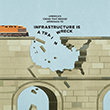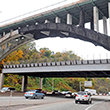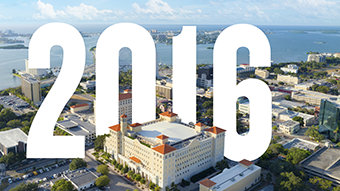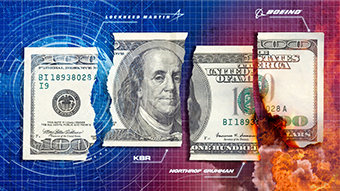You travel on them, over them, or by them almost every day: a pothole, a rotted bridge beam, a rusted train track—signs that America’s infrastructure is failing.
Infrastructure refers to the physical components of systems that power a modern, industrial nation and provide the commodities and services that maintain standard-of-living conditions in a society—roads, bridges, tunnels, water supply, sewers, electrical grids, telecommunications, etc. It is the country roads you meander on family vacations, the train that takes you to work. It is the structures and surfaces that carry America’s trade and its traffic, the conduit for all forms of commerce in this country, from manufacturing and shipping to broadband delivery.
“It’s the backbone of the economy,” says Brian Pallasch, managing director of government relations and infrastructure initiatives for the American Society of Civil Engineers (ASCE).
And it’s broken.
The ASCE produces an annual ‘infrastructure report card’ ranking America’s performance in 16 categories. The country’s overall grade for 2013 (its most recent marks): a D+.

For more than a decade, interests ranging from politicians to construction unions, along with professional organizations like the ASCE, have sounded the alarm that neglect of America’s vital infrastructure comes with a rising cost. The ASCE’s “Failure To Act” studies project that continued underinvestment in the country’s infrastructure will cost U.S. businesses a trillion dollars—and the country’s households more than $600 billion—over the next five years. And we won’t just pay for the neglect in dollars, but also in lives—as was tragically illustrated by the recent fatal Amtrak derailment.
In the global picture, America looks even worse. The World Economic Forum ranks the U.S. 16th worldwide in quality of overall infrastructure for 2014-2015—behind China, the United Arab Emirates, Finland, the Netherlands, Iceland, Portugal, Denmark and seven other nations.
“We look like a third-world country right now when it comes to infrastructure,” former Transportation Secretary Ray LaHood told The Fiscal Times. “Infrastructure is falling apart, infrastructure is crumbling. The country is one big pothole.”
The rupture affects not only conditions at home, but also America’s global competitiveness. The Failure to Act studies forecast that, by 2020, the country’s Gross Domestic Product will fall $3 trillion—and that America will lose $1.2 trillion in international trade value, cut domestic consumer spending by $2.4 trillion, and lose 3.5 million jobs.
It’s universally agreed that to catch up on maintenance and execute necessary expansion and improvement of the nation’s vital infrastructure, it’s going to take not millions, not billions, but trillions of dollars. The tricky part is finding the money. State and municipal budgets pay for some repairs and new projects, but the overwhelming majority of infrastructure funding comes from the federal government.
The feds rely on a variety of sources, but most of it comes from taxes affiliated with the service provided. Funds for energy and water infrastructure, for example, are generated by taxes on those services, along with private investment and disbursements from a general fund.
According to the Energy Institute at Haas School of Business at the University of California, Berkeley, energy efficient homes and even solar power are limiting the amount of funds available for energy infrastructure, especially where rates are multi-tiered. In California, and many other states, the energy a customer uses above a certain level each month costs more, generating higher tax revenue as a percentage. As households become more energy efficient—which all agree is a good thing regardless—many customers don’t reach the higher-rate tiers, and in the absence of raising fees or tax rates, infrastructure funding suffers.
All told, the government currently spends an average of $60 to $70 billion on infrastructure each year, and the lion’s share—about $40 billion—is on surface transportation: roads, bridges and rails. These monies come from the Highway Trust Fund, which draws on an 18.4-cent federal gasoline tax, which has remained at the same level for more than 20 years.
To supplement the existing funding sources, a variety of solutions have been floated in Congress, but they all involve tax increases—which are not popular with voters and therefore constitute shaky ground for politicos. “Many politicians believe that if they would pass this, they’d have trouble at their next elections,” says Pallasch.
While acknowledging that, as issues go, infrastructure “isn’t sexy,” former Pennsylvania Governor Ed Rendell says he doesn’t understand why all politicians aren’t in favor of raising taxes to fund infrastructure. Rendell is also co-founder—along with former New York City Mayor Michael Bloomberg and former California Governor Arnold Schwarzenegger—of Building America’s Future (BAF), a bipartisan group promoting investment in infrastructure.
“It’s a four-way win for America,” Rendell says. “It greatly enhances our safety; it improves the quality of our life with safer roadways, bridges and rails; it keeps us competitive against other nations with transportation of our people and our commerce; and it’s the absolute best job creator—that thing that every politician talks about.”
So, how did the country’s infrastructure get to this failing state?
In the 1950s and 1960s, America was not just active in road construction, but a leader in infrastructure-related job creation, with the development of the Interstate Highway System.
In 1956, the Highway Trust Fund was established and the Federal Aid Highway Act directed a new federal fuel tax—first mandated at 3 cents per gallon to be used exclusively for highway construction and maintenance paid for through the Highway Fund. Later in the 1950s, the gas tax was increased to 4 cents. President Ronald Reagan raised the tax to 9 cents per gallon in 1983, with 1 cent going into a newly created mass transit fund. The gas tax was again increased in 1990 by President George H. W. Bush, to 14 cents, but half of the five-cent increase was funneled to overall federal deficit reduction. In 1993 President Clinton increased the gas tax to 18.4 cents with all of the increase going toward deficit reduction until, four years later, the Taxpayer Relief Act of 1997 redirected all of the 1993 increase back to the two funds of the Highway Trust.
And then—nothing. The Act funding the trust actually expired years ago, but has been temporarily extended by Congress—a total of 33 times—at the same 18.4 cents per gallon level.
“We’ve been stuck at that number for years,” laments the ASCE’s Pallasch. “We’re trying to build this 21st century infrastructure with 1993 dollars.”
And it shows.
In 2008, the Highway Trust Fund required support of $8 billion from general revenue funds to cover a shortfall. Further transfusions of cash were required in 2009 ($7 billion) and 2010 ($19.5 billion). Now, the U.S. Department of Transportation says that both the Highway Account and the Mass Transit Account of the Fund are again nearing insolvency. Both are projected to go bankrupt in September.
Highway Trust Fund ticker
Pallasch, Rendell and a growing number of voices say that it’s time to stop it with the stopgap measures and take the long view on this national challenge. To deal with the surface transportation infrastructure—the biggest chunk—the ASCE wants a gas tax increase to 20 cents per gallon. “I know that seems significant,” Pallasch says, “but for the average driver, that works out to less than $200 a year.”
For his part, Rendell would like to see the tax rounded up to 40 cents a gallon as part of a long-term plan, which he says would still make us the lowest fuel-taxed nation in the world. “Every one of the G-20 nations except America has gone on long-term infrastructure plans,” Rendell points out.
The Highway Trust Fund is set to expire—again—at the end of July. But not everyone agrees that higher taxes are the answer.
Louisiana Governor Bobby Jindal, who is widely expected to announce a bid for the 2016 Republican presidential nomination, told The Daily Signal: “I don’t think they need to be raising taxes. The Democrats never saw a tax they didn’t want to increase. They want to use this as an excuse to grow government.”
“If we invest in infrastructure it can be very good for the economy, but […] all of a sudden there are these rules and restrictions that make it more expensive, that sometimes don’t allow those dollars to go where they are most needed. There’s a lot of waste when D.C. gets involved,” he said in an interview at the Faith and Freedom Conference in Washington, D.C., on June 22, taking the opportunity to make the federalist case when it comes to highway spending and control.
“As they debate this,” Jindal said, “I hope the folks in D.C. will remember that there is a 10th Amendment to the Constitution and D.C. doesn’t always know best. Sometimes it might be good to trust local and state governments.”
Tragedies like the Amtrak crash in May that killed eight people and injured 200 more tend to focus attention on infrastructure issues—and with the latest Highway Trust Fund expiration looming (not to mention its impending insolvency) the discussion around infrastructure funding has indeed heated up.
The House Ways and Means Committee and the Senate Finance Committee have hearings scheduled through early July to try and reach a decision on a new funding mechanism. “Congress seems ready to take seriously their responsibility to maintain the transportation infrastructure,” Pallasch says. “And we will hold their feet to the fire.”
Ironically, the Amtrak accident happened on the first night of National Infrastructure Week, a BAF-sponsored event designed to draw lawmakers’ attention to infrastructure issues.
Amtrak Train 188 left Philadelphia bound for New York, and suddenly more than doubled its speed to 106 mph, racing toward a curve with a 50 mph limit. Had the train been travelling southbound, into Philadelphia, an automatic Positive Train Control system would have prevented the train from going too fast.
But the northbound route never had a control system installed—what Amtrak CEO Joseph Boardman called “a loophole.” He said the assumption was that trains just leaving the station and heading north would be going slower than those speeding in from New York, and so the funds weren’t allocated to install the system on both sides.
“Experts have made it clear that Positive Train Control could have prevented the tragedy in Philadelphia,” says Senator Charles Schumer, (D-NY). “It is simply a fact that insufficient funding for Amtrak has delayed the installation of PTC.”
Train 188 jumped the tracks, and all seven cars derailed. The Amtrak engineer was on record as a critic of the one-sided safety system, posting on a blog that there has been “nearly a hundred years of opportunity to implement some sort of system to mitigate human error,” referring to the crash of the Pennsylvania Railroad’s Congressional Limited in 1943, which entered the same curve—also heading north to New York—killing 79 people and injuring 179.
The “tragedy in Philadelphia was not caused by a failure of technology,” Rep. Robert Brady, (D-PA) has said. “It was a failure of political will to implement the technology we have that could have avoided the loss of lives.”

As for the nation’s bridges, studies show there are some 70,000 in the U.S. that are considered to be structurally deficient. A report released in March by the state’s Road Improvement Program found that 27 percent of the bridges in New York are “functionally obsolete.” A representative in the governor’s office there called the Tappan Zee, a 7-lane span used by more than 130,000 cars a day, “a hold-your-breath bridge.”

In Pittsburgh, there’s a bridge built beneath another bridge specifically to catch falling debris before it can harm motorists traveling below.
Also in Pennsylvania, in 2008, two engineers decided to stop for a late lunch on a Monday afternoon after a round of inspecting highway bridges for the Pennsylvania Department of Transportation. They went to a takeout sandwich shop beneath one of the trestles that supports six lanes of I-95, one of the country’s major highways that runs for 18 miles through Philadelphia.
Looking up, one of the workers saw an 8-foot long gash, about 5 inches wide in concrete support. By 6:30 p.m., amid the evening rush hour, that city’s busiest highway was shut down. And it remained closed for four days while the bridge support was repaired. “It was just a matter of days before that was going to collapse,” Rendell, the former governor of Pennsylvania, tells Freedom. “We got very lucky that those guys went looking for that cheese steak place.”

While politicians continue to discuss proposals for how to raise more federal infrastructure dollars, states and municipalities are identifying projects on their own, and finding ways to fund them. “Across the country, we’re seeing pockets of progress,” says Pallasch of the ASCE.
In Lakewood, Colorado, just west of Denver, a state-funded project is building six bridges to replace six outdated ones spanning the Burlington Northern Santa Fe railroad tracks just east of I-25, and will include construction of a bicycle and pedestrian bridge.
Jay Hutchison, Lakewood’s director of public works, says that while his city is in good shape on most infrastructure repairs, he’d still like to see more. Additional sidewalks and bike paths, and improvement of storm water draining, are also high on the city’s list. “We hadn’t been making a dent,” Hutchison says. But he said the city council, in recognition of the need, increased funding for sidewalk and bikeways from its regular $300,000 a year. “We got a one-time $2 million extra bump.” No other items were cut from the budget, he says, though the city did dip into its reserves to pay for the project.
For improvements to the city’s storm water management utility, Lakewood City Council approved an increase in the monthly water management service charge all residents and businesses pay. Like the national fuel tax, Lakewood’s service charge had lagged far behind the times. “It hadn’t been increased in a decade and a half,” Hutchison says. Single-family homes and duplexes saw an 86 percent increase in fees—charges went from $23.76 a month to $44.40—and business rates were raised proportionately based on their size.
Other municipalities nationwide are struggling to deal with water main ruptures, as corrosion and lack of maintenance puts city water systems at risk of catastrophe. A recent U.S. Environmental Protection Agency survey found California at the top of the list of states in need of significant maintenance and upgrade of its water infrastructure. The state, in the grips of a four-year drought, would need nearly $45 billion to fix its aging water system over the next two decades. Texas was second with a need of nearly $34 billion and New York third requiring $22 billion.
In Los Angeles, 20 percent of active water pipes were installed before 1931, and will end their usefulness within the next 15 years. The city has a $1.3 billion proposal to replace 435 miles of pipe over in the next decade—more than twice its annual maintenance pace—but no solid plan to fund those repairs.
And this past Memorial Day weekend, thunderstorms and tornados resulted in flooding that led to at least 35 deaths in Texas, Oklahoma and parts of Louisiana. The rain and flooding, the worst in more than 100 years, caused some $45 million in damage, with a $25 million hit to public utilities and infrastructure.
America’s electricity infrastructure—now that’s a real shocker. While the U.S. ranked 16th overall for infrastructure in the World Economic Forum Global Competitiveness Report, in some categories we did much worse. In the ‘quality of electricity supply’ category, we ranked 24th. And according to a recent National Public Radio report, the U.S. has had “more power failures per person than any other advanced economy.”
As the clock ticks down on the next Highway Trust Fund extension, passions are high but optimism is low—no one really expects Congress to do anything but extend the deadline another six months.
Senate Finance Committee member Mark Warner (D-VA), along with Roy Blunt (R-MO) and nine other Senators, introduced the bipartisan Building and Renewing Infrastructure for Development and Growth in Employment Act—or BRIDGE Act. The Act calls on the federal government to provide $10 billion to seed a new infrastructure financing authority—a bank—aimed at helping states and communities raise private funds to assist in local projects. Warner introduced the same bill, with nearly identical language, two years ago—without success.
In May, Senator Deb Fischer (R-NE) also introduced a bill calling for an infrastructure bank, which she says is a more viable solution to the transportation-funding shortfall than increasing the gas tax. Under Fischer’s proposal, called the BUILD USA Act, states would return unused federal dollars from previous construction projects to provide a pool of funding. States that agree to participate in the program for a three-year period would receive greater control over their transportation projects and be able to apply for low-interest federal loans for other infrastructure work. “My bill adheres to three important points: reduce regulatory burdens, redirect funding, and provide states with more authority to manage their highways and bridges,” Fischer told The Hill.
The Department of Transportation has said that the Highway Trust Fund will have to stop making payments to state governments for construction projects that are already underway if Congress does not come to an agreement on an extension by July 31.
Ed Rendell, who is also the author of A Nation of Wusses, How America’s Leaders Lost the Guts to Make Us Great, still favors a tax hike to a newfangled infrastructure bank, and doesn’t mince words when he opines why, calling members of Congress who reject new taxes to fund long-term improvements “ideologues or outright cowards.”
“They don’t want to invest in research—that’s what made us great. They don’t invest anymore in education—that made us great. And we don’t invest in infrastructure, and it’s paralyzing the country,” Rendell says.
“Sometimes I feel like Don Quixote with this topic. But I’m not stopping, it’s too important.”

Break it Down
The American Society of Civil Engineers (ASCE) derives its infrastructure grades from a variety of reports in 16 categories and based on “a series of factors: capacity, current state of the system, current and proposed funding, and whether we’re making progress to make the infrastructure better,” says ASCE spokesperson Brian Pallasch.
America’s Infrastructure Report Card









































